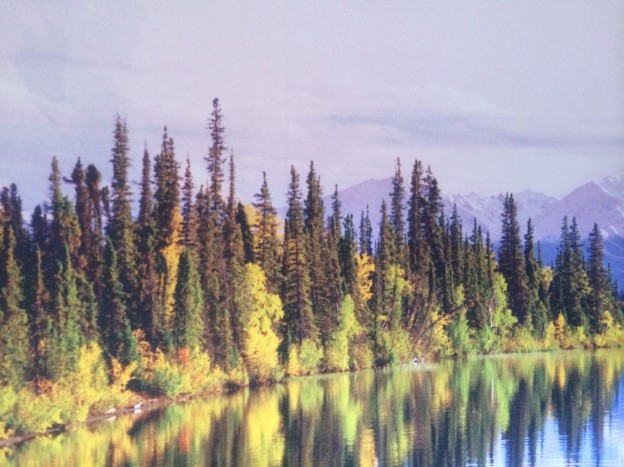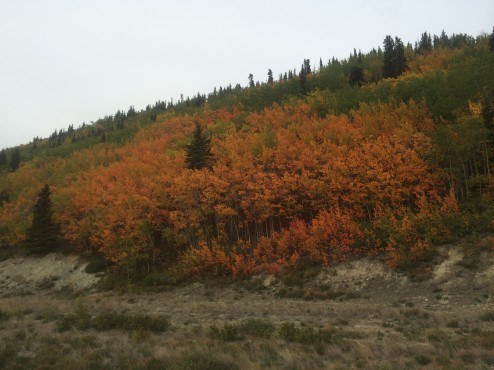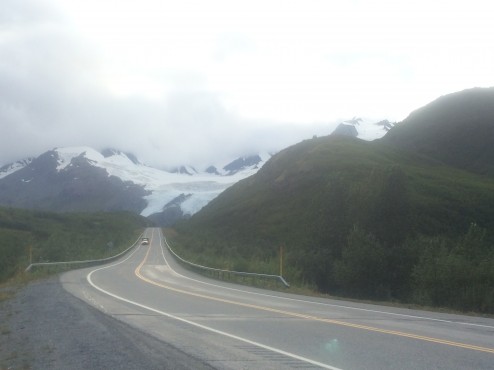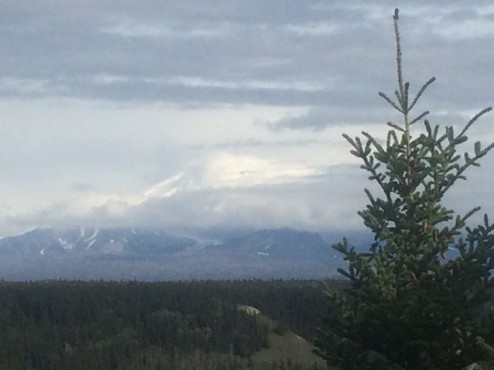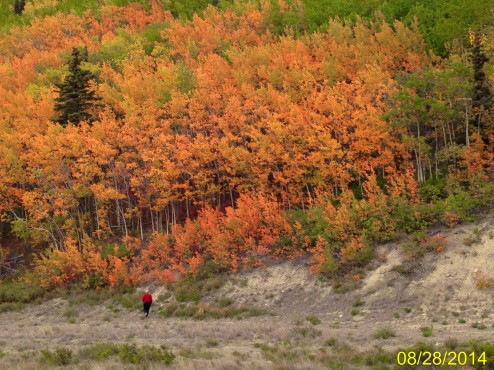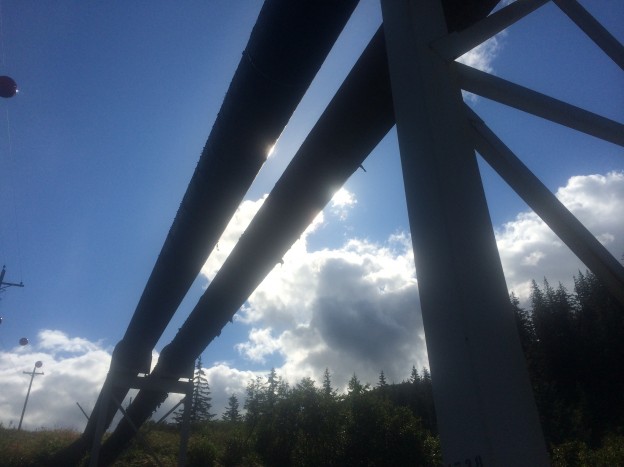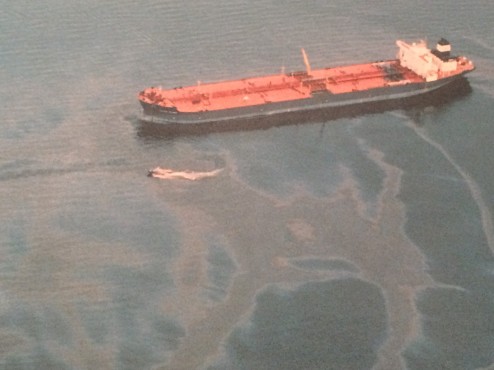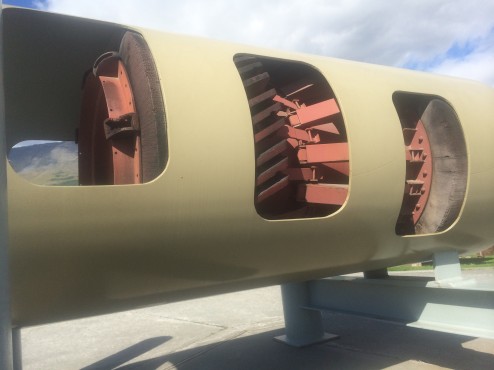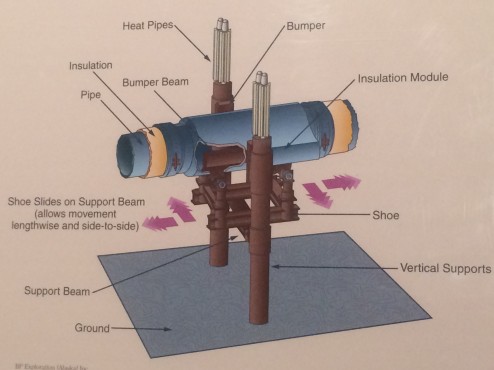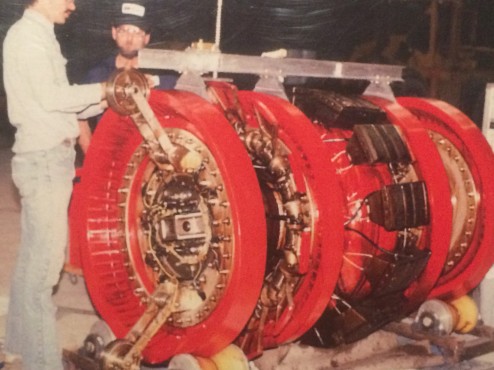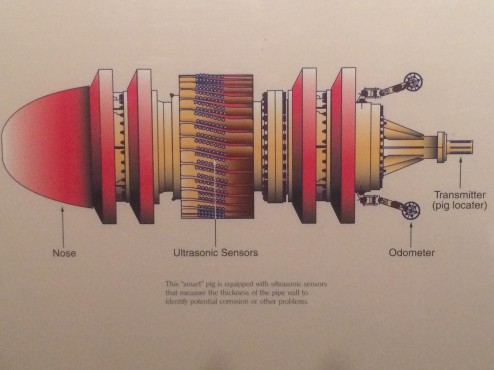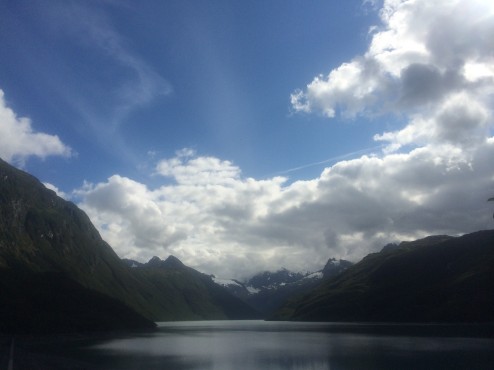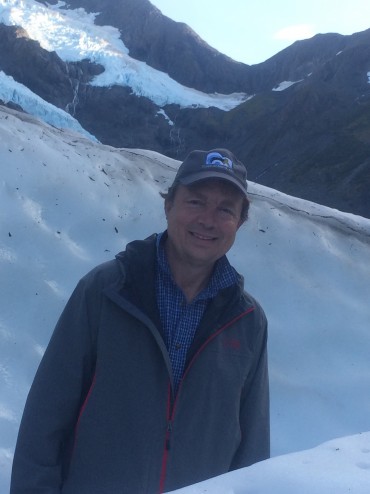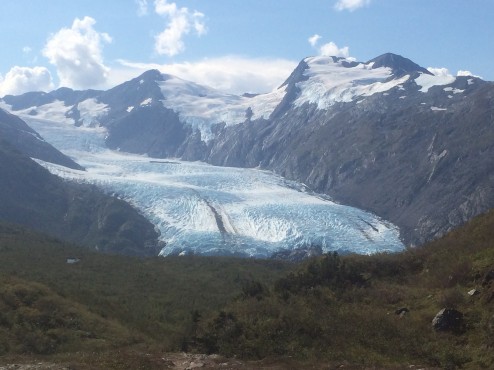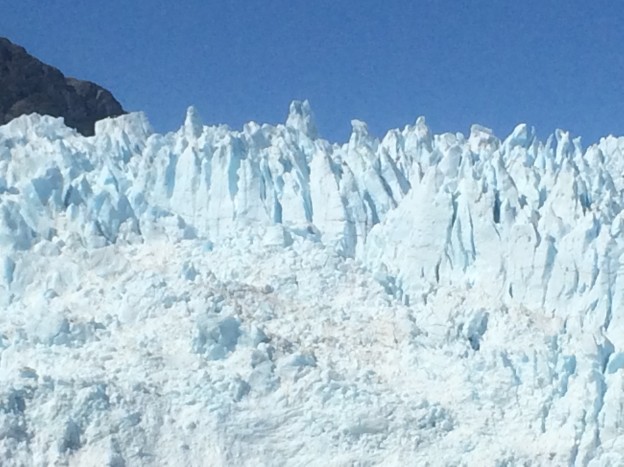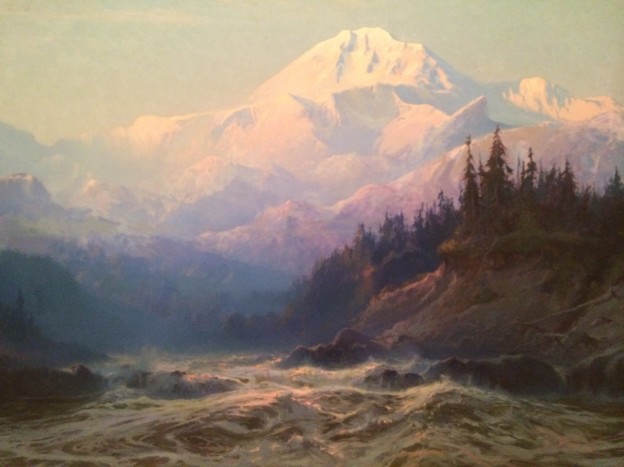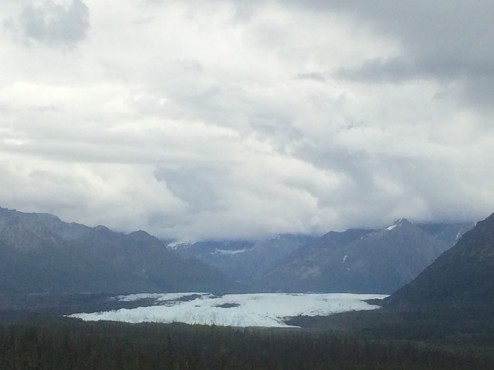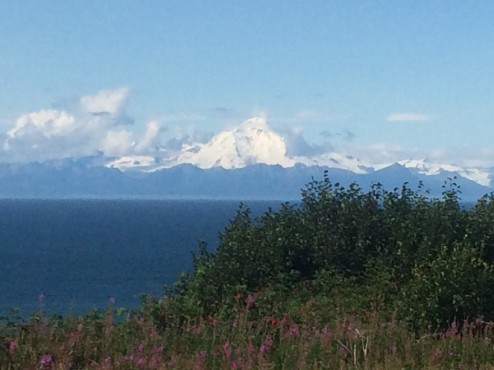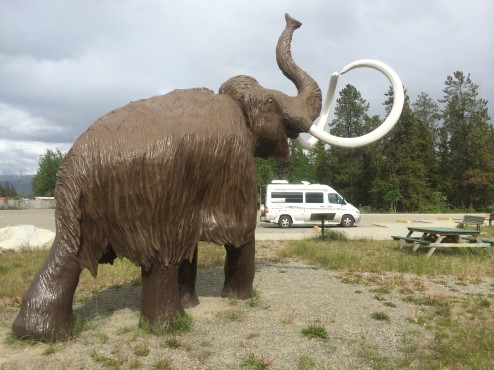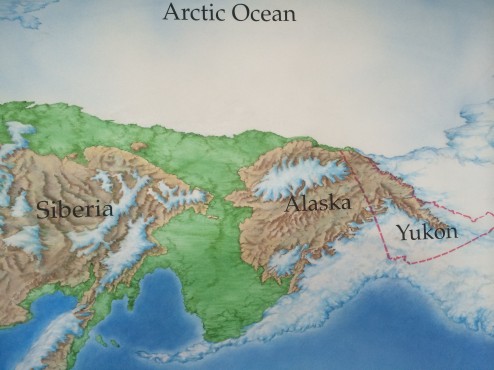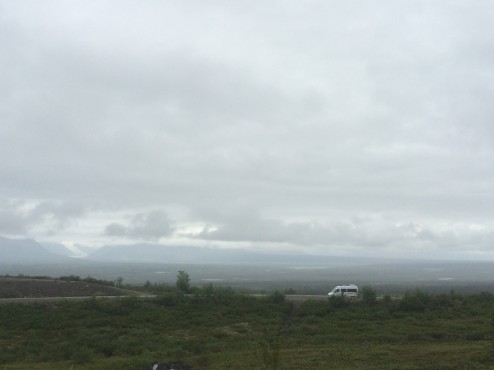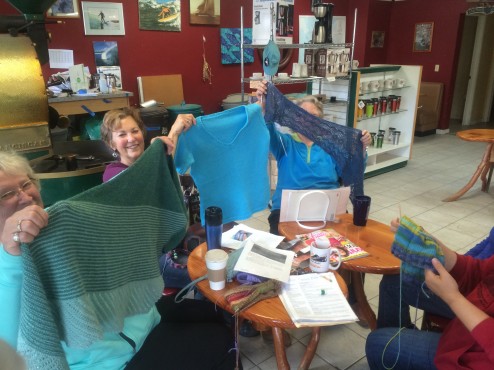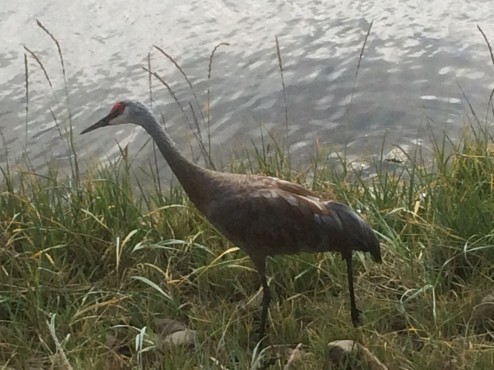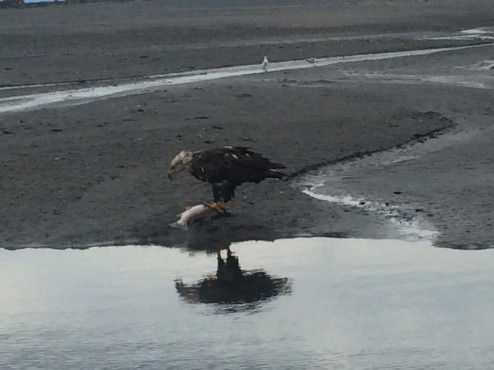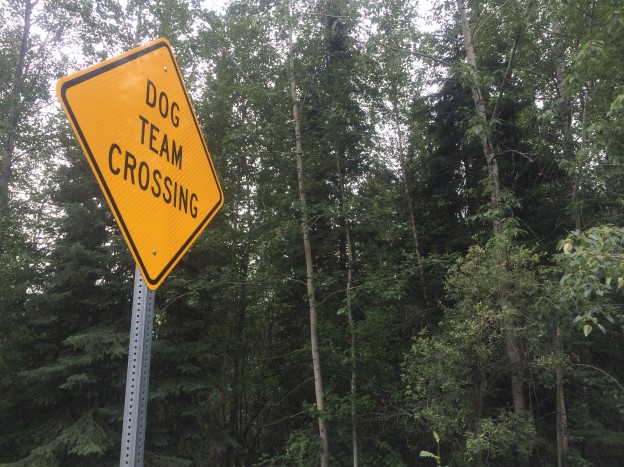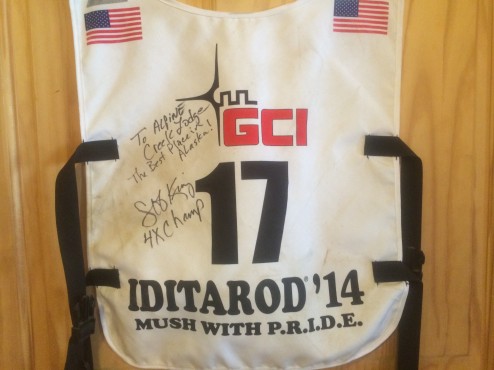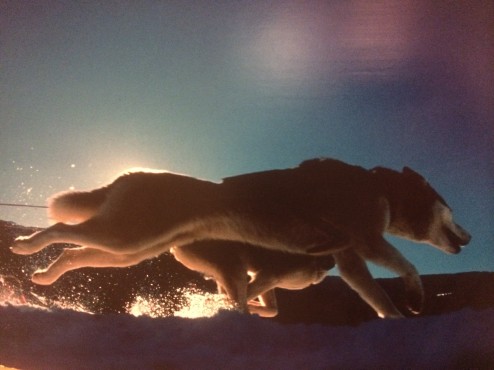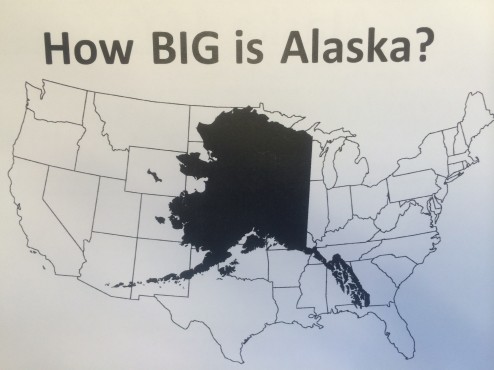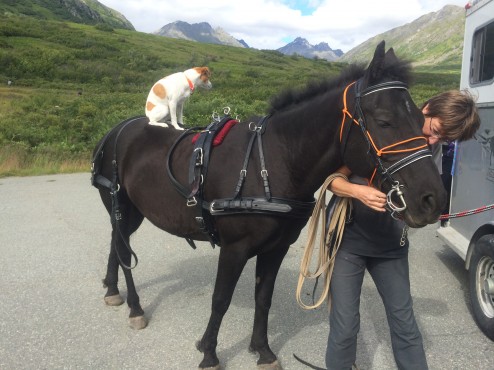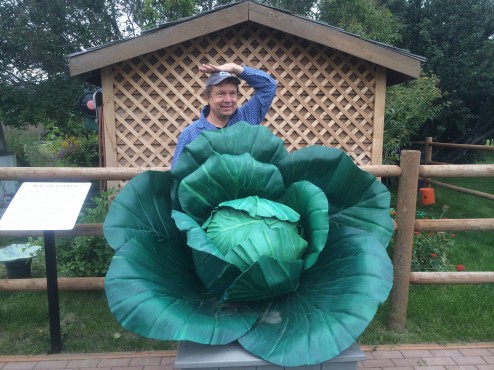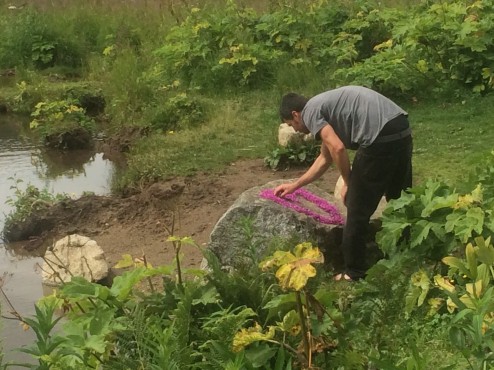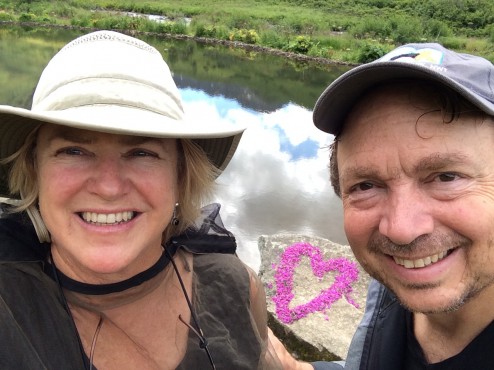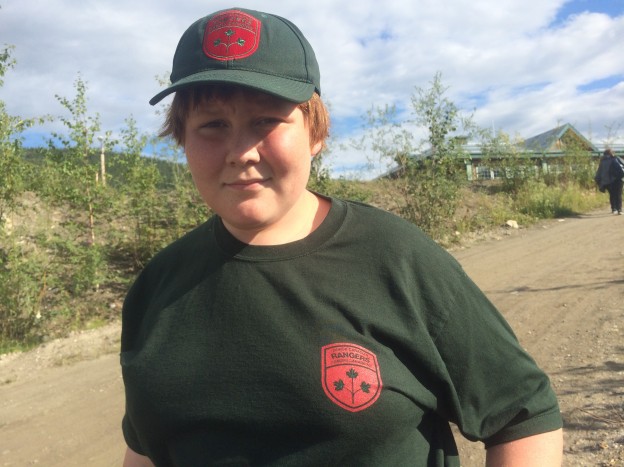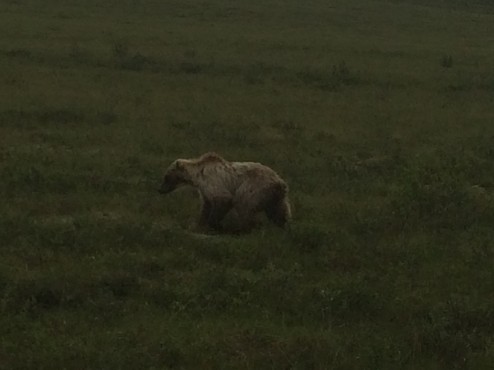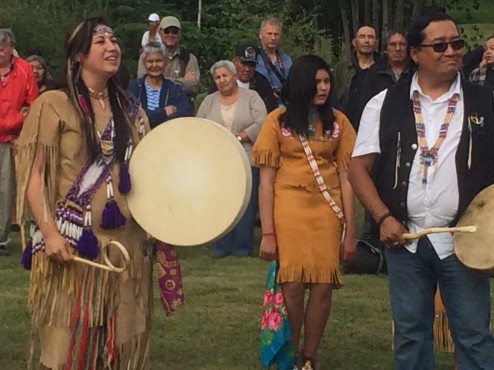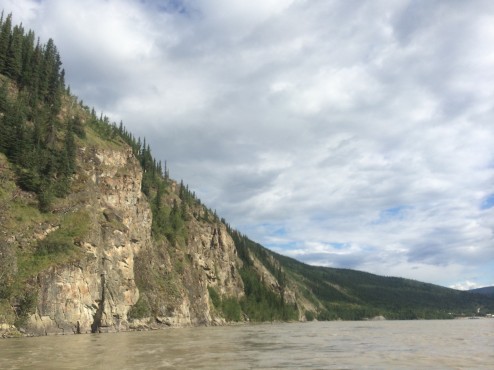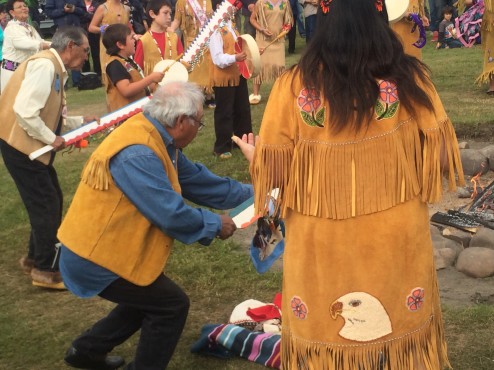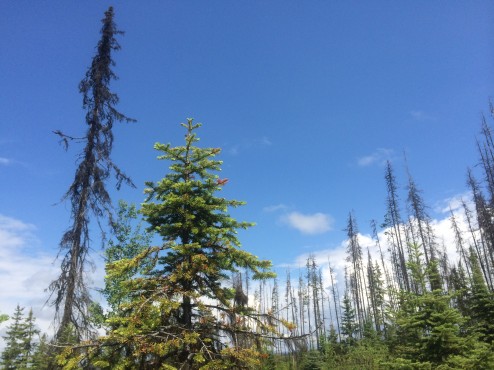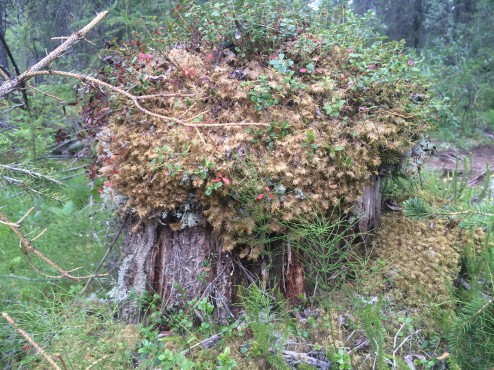Besides our amazing U. S. Constitution, the National Park Service might be our second greatest American contribution to the world. Not only does it steward priceless lands like Kenai Fjords National Park, but also makes them accessible to the public, and provides education to enhance our enjoyment. Kenai (pronounced like ‘be my’) NP protects the Harding Ice Field which makes up 50% of the 670,000 acre park. The rest of the acreage is the detritus thereof: glaciers that flow as fast as your nails grow, carving steep sided fjords, and providing scoured rock for temperate rain forest to grow where glaciers have retreated. The eerie sound of glacial moaning and creaking as it melts and shifts with heat and gravity, proceeds the gunshot-like crack of the calving glacier, seen as a 40 foot splash below at Holgate Glacier.
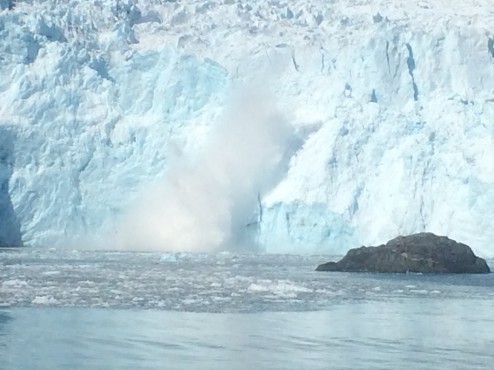
The first to populate after glacial retreat are the pioneers, the Lichens. Lichens use fungi biology for structure and to reproduce with air borne spores, use algae biology for photosynthesis, and also secrete an acid that breaks down rock to make dirt. Plants then fill in, in the following order as each provides a platform for the next life form: moss, nitrogen-fixing plants like lupines and fireweed, shrubs like alders and willows, cottonwood, and finally when sufficient soil is developed, the Sitka Spruce. Even the salmon returning to their creeks help out as bears, birds, and other animals eat them, and spread salmon fertilizer across the forest floor; salmon DNA has been found in the top of the tallest sitka spruces. The photo below shows lichen, moss, fireweed mulch, and an alder shoot, grabbing for life onto bare rock recently covered by the Exit Glacier, reachable by a short hike.
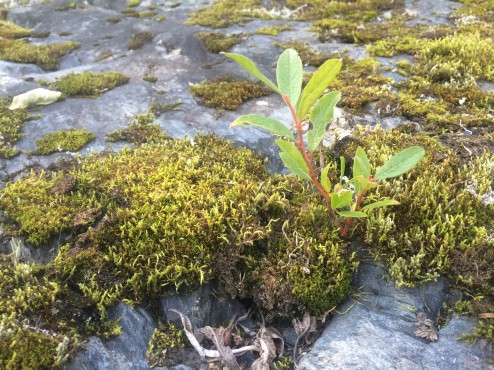
One examples of extraordinary NPS contribution to education was the visual display showing the Exit Glacier’s rapid retreat, with signs on the entry road every 1/8th mile, showing the Glacier’s many miles of retreat, from 1850 to the present. Surprisingly, there was no information on the human contribution to the Exit Glacier remarkable retreat. Instead, we searched for recent research on glacial retreat in general since 1850 and found an article by scientists at the University of Innsbruck in Austria published in the journal, Science Express. For the period from 1851 through 2010, they calculated the human contribution at a quarter, “In the 19th and first half of the 20th century we observed that glacier mass loss attributable to human activity is hardly noticeable but since then has steadily increased”. The researchers used a computer model and global inventory of glaciers to analyze changes in their ice content from 1851 through 2010. That enabled them to separate out the human influence on melting rates from natural ice loss due to variability in solar radiance and volcanic eruption. They concluded that, “the human contribution to melting glaciers is quickening, and now accounts for more than two-thirds of the ice lost world wide”. Wow….more, scary and definitive proof of global warming, caused by our own human practices.
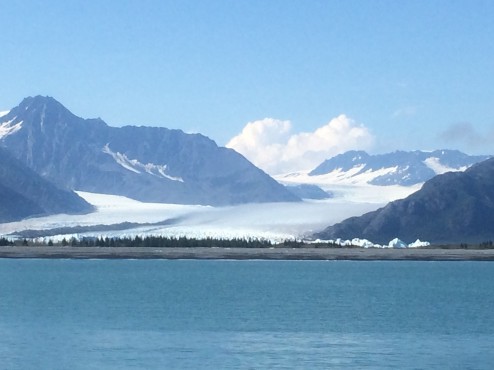
Global average temperature has warmed by 1.4 degrees Fahrenenheit since 1850, according to the United Nations, which projects temperatures will rise by as much as another 4.8 degrees this century. That would be the quickest shift in the climate since the last ice age ended about 10,000 years ago. Glacial melt “has been a major cause of sea-level rise during the 20th century”, state the researchers. The world’s glaciers contain enough water to raise sea levels by 16 inches, according to the United Nations. Wow. 16 inches, and that is not even considering the far slower melting of the Greenland and Antarctic ice sheets that could elevate sea level by another 216 feet. There is no question anymore that we humans have screwed ourselves with our fossil fuel use, and methane production from animal based industries, causing worsening periods of drought, severe weather, and likely increasing coastal flooding. Get out there and enjoy your glaciers while you can….and don’t buy property too close to the ocean.
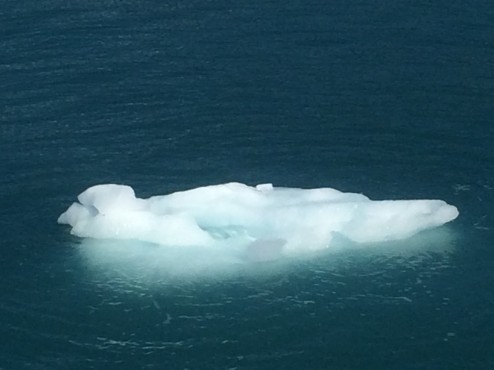 Nearby fishing town Whittier, also offers short glacier hikes to Byron Glacier, and up to Portage Pass to overlook Portage Glacier, and iceberg filled Portage Lake. However, our best experiences were by boat, out of Seward. Not only did the NPS provide us with a great Ranger/biologist, but the staff scooped a bergie bit (above) to make us iceberg margaritas…once we cleared the rougher seas in the Gulf of Alaska. That 8 hour day on a fast boat, south of Resurrection Bay, we saw the following: breaching pods of humpback whales x 4, bald eagles, puffed and horned puffin, kittiwake, murre and red-faced cormorant colonies on the cliffs, rafted-up sea otters, Dall’s porpoises surfing our bow wave, smelly sea lion colonies, harbor seals strewn on the ice, and red sea stars creating a defined wide black mark running along the entire coast, where they have eaten away almost all of the intertidal sea urchin population (below). Even the staff said when we were surrounded on all sides by huge, humpback whales exhibiting learned fishing behaviors like loud fin-slapping, it was the best wildlife viewing day of the summer. Lucky us! Another boat trip near Alaska’s 2nd largest glacier, Columbia Glacier near Valdez, paled when compared to our day with our National Park Service Ranger, Rebecca.
Nearby fishing town Whittier, also offers short glacier hikes to Byron Glacier, and up to Portage Pass to overlook Portage Glacier, and iceberg filled Portage Lake. However, our best experiences were by boat, out of Seward. Not only did the NPS provide us with a great Ranger/biologist, but the staff scooped a bergie bit (above) to make us iceberg margaritas…once we cleared the rougher seas in the Gulf of Alaska. That 8 hour day on a fast boat, south of Resurrection Bay, we saw the following: breaching pods of humpback whales x 4, bald eagles, puffed and horned puffin, kittiwake, murre and red-faced cormorant colonies on the cliffs, rafted-up sea otters, Dall’s porpoises surfing our bow wave, smelly sea lion colonies, harbor seals strewn on the ice, and red sea stars creating a defined wide black mark running along the entire coast, where they have eaten away almost all of the intertidal sea urchin population (below). Even the staff said when we were surrounded on all sides by huge, humpback whales exhibiting learned fishing behaviors like loud fin-slapping, it was the best wildlife viewing day of the summer. Lucky us! Another boat trip near Alaska’s 2nd largest glacier, Columbia Glacier near Valdez, paled when compared to our day with our National Park Service Ranger, Rebecca.
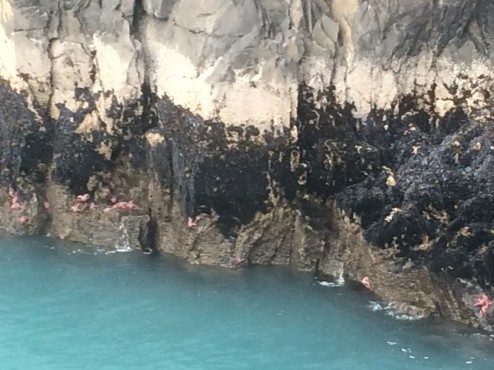 Best of all though was watching some unidentified underwater predator drive the fish into a tightly packed, defensive “fish ball”, creating a mob of gulls on the surface attacking a yard in diameter on the surface of the water, only to have them suddenly disperse as a humpback whale swallowed the fish ball whole, as a tasty bundle. We walked home from the boat, to our own fish ball, a “Bucket O’ Butt” (that would be a bucket of fried, fresh halibut), while we sat with our dinner and wine at our waterfront home in Seward, watching a sea otter feeding on shellfish 20 feet off shore for two hours…every evening. Sweet!
Best of all though was watching some unidentified underwater predator drive the fish into a tightly packed, defensive “fish ball”, creating a mob of gulls on the surface attacking a yard in diameter on the surface of the water, only to have them suddenly disperse as a humpback whale swallowed the fish ball whole, as a tasty bundle. We walked home from the boat, to our own fish ball, a “Bucket O’ Butt” (that would be a bucket of fried, fresh halibut), while we sat with our dinner and wine at our waterfront home in Seward, watching a sea otter feeding on shellfish 20 feet off shore for two hours…every evening. Sweet!
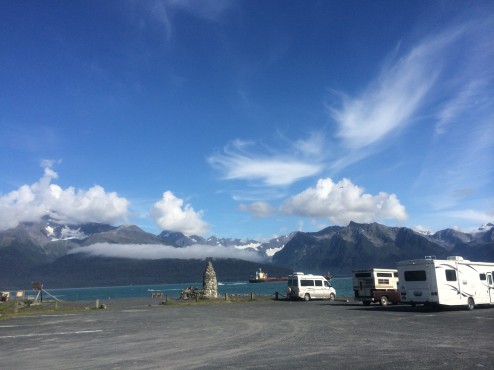 Seward rocks!…in summer. It had a beautiful new library and painted murals throughout town (below). In winter, 25 of the 30 restaurants are closed, the population drops to 2500…and 500 of those are incarcerated inmates at Alaska’s maximum security prison across Resurrection Bay from Seward, approximately behind the freighter in the photo above. Only one person has escaped from there, in winter, and turned himself in within a week; ‘freedom’ was just more snow, glacial water, and ice, minus the “3 hots and a cot”.
Seward rocks!…in summer. It had a beautiful new library and painted murals throughout town (below). In winter, 25 of the 30 restaurants are closed, the population drops to 2500…and 500 of those are incarcerated inmates at Alaska’s maximum security prison across Resurrection Bay from Seward, approximately behind the freighter in the photo above. Only one person has escaped from there, in winter, and turned himself in within a week; ‘freedom’ was just more snow, glacial water, and ice, minus the “3 hots and a cot”.
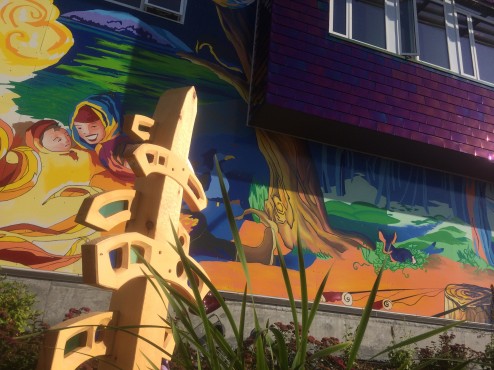
Posted from Seward, Alaska, United States.
60.0437764-149.8163644

